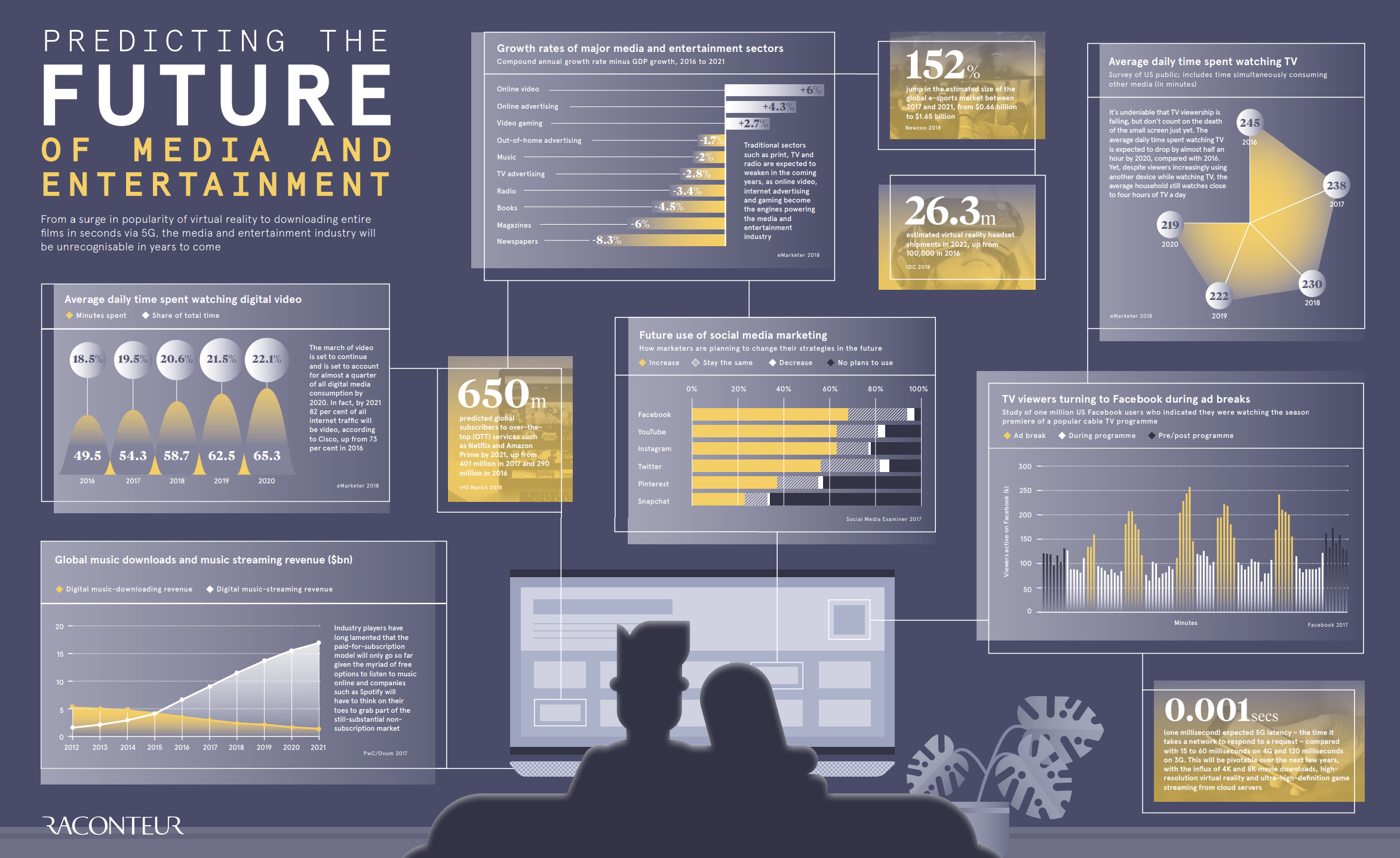While we wait for the breakthrough in AR and VR to turn media on its ear (much as we waited for 3D and holographic video to shock us out of episodic TV, the 24-hour news cycle and reality television), we are still consuming 2D video and stereo audio in ever-increasing quantities. Factors that are making it all possible from the technical side include bandwidth increases in speed globally, compression algorithms to handle 4K video becoming standardized, and high resolution screens on smaller devices a defacto part of the package.
The media disruptor at the level of an iPhone hasn’t shown up yet, so we’ll have to accept the steady pace of generational preferences running a stable curve for now. All suggestions to the contrary are welcomed, just comment below!!
Credit for this infographic, which attempts to predict the future of media and entertainment goes to Raconteur
Key Trends include:
Annualized Media Sector Growth (Minus GDP Growth) from 2016-2021
Media sector/Annual Growth (minus GDP growth)
Online Video 6.0%
Online Advertising 4.3%
Video Gaming 2.7%
Out-of home Ads -1.7%
Music -2.0%
TV Advertising -2.8%
Radio -3.4%
Books -4.5%
Magazines -6.0%
Newspapers -8.3%
Online video (6.0%), online ads (4.3%), and video gaming (2.7%) are the only sectors growing at a rate faster than GDP growth.
Steady trends: TV watching is sinking, while Digital Video viewing rises… will 5G make a tectonic shift happen? 5G latency is expected to be 0.001 seconds, which is 15-60x faster than 4G
Daily Minutes Watching TV vs. Digital Video
Year TV (Minutes watched) Digital Video (Minutes Watched)
2016 245 49.5
2017 238 54.3
2018 230 58.7
2019 222 62.5
2020 219 65.3
By 2021, Cisco says that 82% of all internet traffic will stem from digital video
There will be 26.3 million VR headsets shipped in 2022, up from 100,000 in 2016
The eSports market will jump 152% in size by 2021
By 2021, there will be 650 million subscribers to services like Amazon Prime or Netflix
